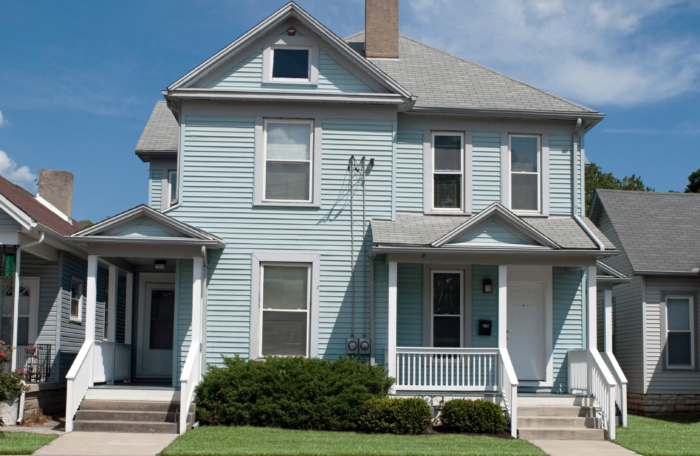Manchester could boost its housing supply by allowing more duplexes
Manchester is often seen as the center of multifamily housing in the state, while smaller cities and surrounding towns are viewed as less hospitable. But Manchester’s land-use regulations are unusually hostile to one relatively popular form of multifamily housing: duplexes.
Two-family housing is permitted on only 18% of Manchester’s buildable area, according to the New Hampshire Zoning Atlas, created by the Center for Ethics in Society at Saint Anselm College.
That puts the Queen City smack in the middle of New Hampshire’s cities when it comes to permitting duplexes.
Here are New Hampshire cities ranked by the percentage of buildable land on which duplexes are allowed:
Claremont: 86%
Dover: 57%
Rochester: 56%
Berlin: 45%
Nashua: 42%
Laconia: 19%
Manchester: 18%
Portsmouth: 17%
Concord: 15%
Lebanon: 14%
Somersworth: 10%
Keene: 6%
Franklin: 5%
Besides Bedford, the municipalities surrounding Manchester are much friendlier to duplexes:
Goffstown: 74%
Londonderry: 63%
Litchfield: 59%
Merrimack: 55%
Auburn: 31%
Hooksett: 21%
Manchester: 18%
Bedford: 1%
“I was a little bit surprised about how restrictive Manchester is toward duplexes, but it makes sense when you think about it,” Jason Sorens, senior research faculty at the American Institute for Economic Research and the principal investigator of the New Hampshire Zoning Atlas, said.
“The very fact that Manchester has had a lot of blue-collar housing near the center in the past has made single-family neighborhoods, particularly in the North End, very protective of their status. And at the same time, business and commercial districts in the city sometimes (not always) allow multifamily development but restrict one- and two-unit buildings.
“It seems to me the latter problem is easy to fix: There’s no constituency for keeping small-scale housing out of commercial districts. Mixed-use and planned unit developments should be lawful across everything that is now zoned commercial or business.”
On small lots (less than one acre), only 1.9% of Manchester’s buildable area is open for duplex development.
“Even in the single-family districts, legalizing duplexes is a small step, because ADUs are already legal under state law,” Sorens said. “All you have to do is remove the maximum size requirement (currently 750 square feet), and duplexes are then effectively lawful.”
Manchester is slightly more hostile to triplexes than duplexes. On only 17% of Manchester’s buildable land is three-family housing allowed.
Opposition to multifamily housing typically arises from fears that large apartment buildings will be erected next to single-family homes, changing the character of residential neighborhoods. But the Zoning Atlas shows that municipalities, including the state’s largest city, can add to the state’s housing stock just by reducing restrictions on duplexes.
Making it easier to build duplexes and multifamilies in Manchester would make homes and apartments more affordable. The median home price in New Hampshire is up to $490,000, according to the New Hampshire Association of Realtors (NHAR).
These monthly median prices have been increasing for 43 consecutive months (since February 2020). And for the second straight month, the affordability index sat at 59—both an all-time low and a 15% drop from one year ago.
Monthly median gross rent for two-bedroom units in the state is $1,764.
Duplexes and triplexes offer options for both homeowners and renters. They can be great starter homes that double as investment properties for young couples and individuals.
To get more of them, municipalities will have to change their land-use regulations, not just to allow more duplexes and triplexes, but to reduce secondary regulations that prevent them from being built.
“Beyond duplexes, you really have to look at how the zoned density compares to the existing density,” Sorens added. “On much of the West Side, multifamily development is allowed, but tight floor area ratios, low maximum heights, and inappropriate parking minimums have made it impossible to increase density there at all. The strict regulations haven’t gentrified these neighborhoods despite rising rents; instead, they’ve helped create a homelessness problem downtown.”
Though Manchester has allowed the construction of more large apartment buildings, its burdensome restrictions on small multifamily options keep the city’s housing supply artificially low, raise prices, and limit options for city residents.



